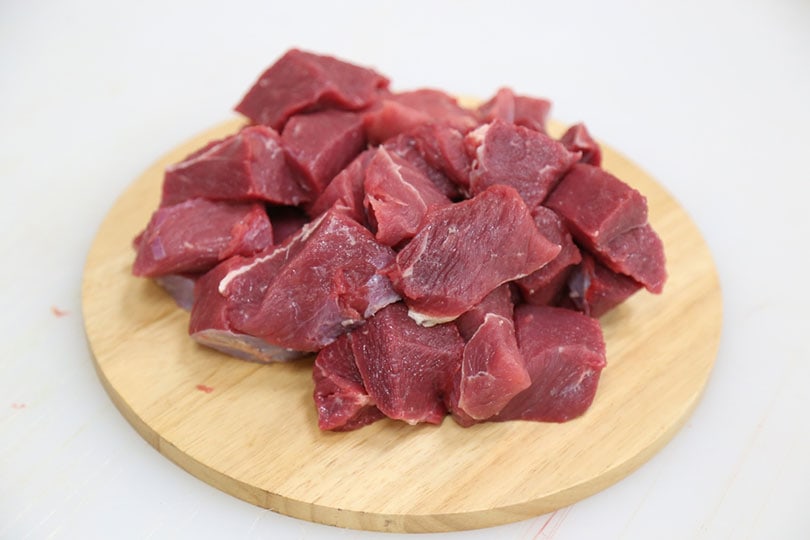What Vegetables Can Bearded Dragons Eat? 27 Vet-Approved Options
Updated on
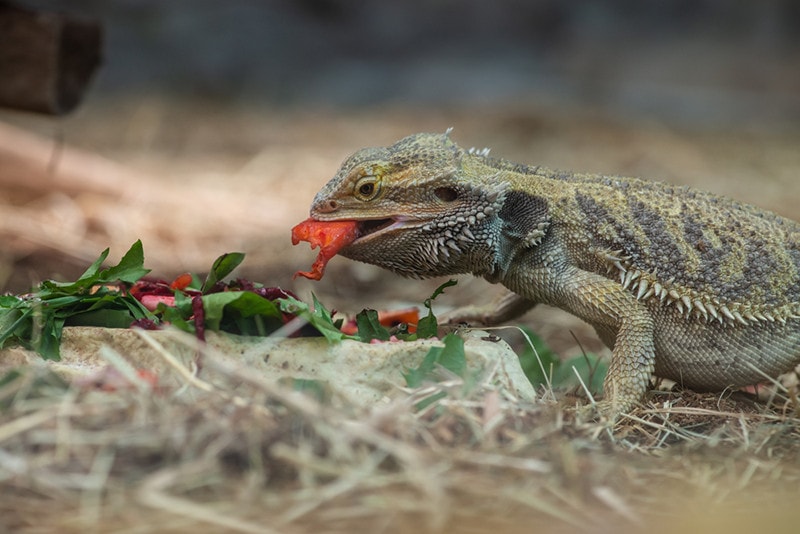
Vegetables are an extremely important part of a bearded dragon’s diet, regardless of their age. For young beardies under 4 months of age, the diet should consist of around 30% plant matter, while juveniles and adults require around 50% plant matter, though field studies have found adults consuming up to 90% plant matter in their diet without issues.
Fruits, vegetables, and even edible flowers can all be included in a bearded dragon’s diet. Vegetables are great for feeding to your bearded dragon because they are accessible and often inexpensive, but you need to know which vegetables are safe for your bearded dragon to eat.
The 27 Safe Vegetables for Bearded Dragons
1. Greens
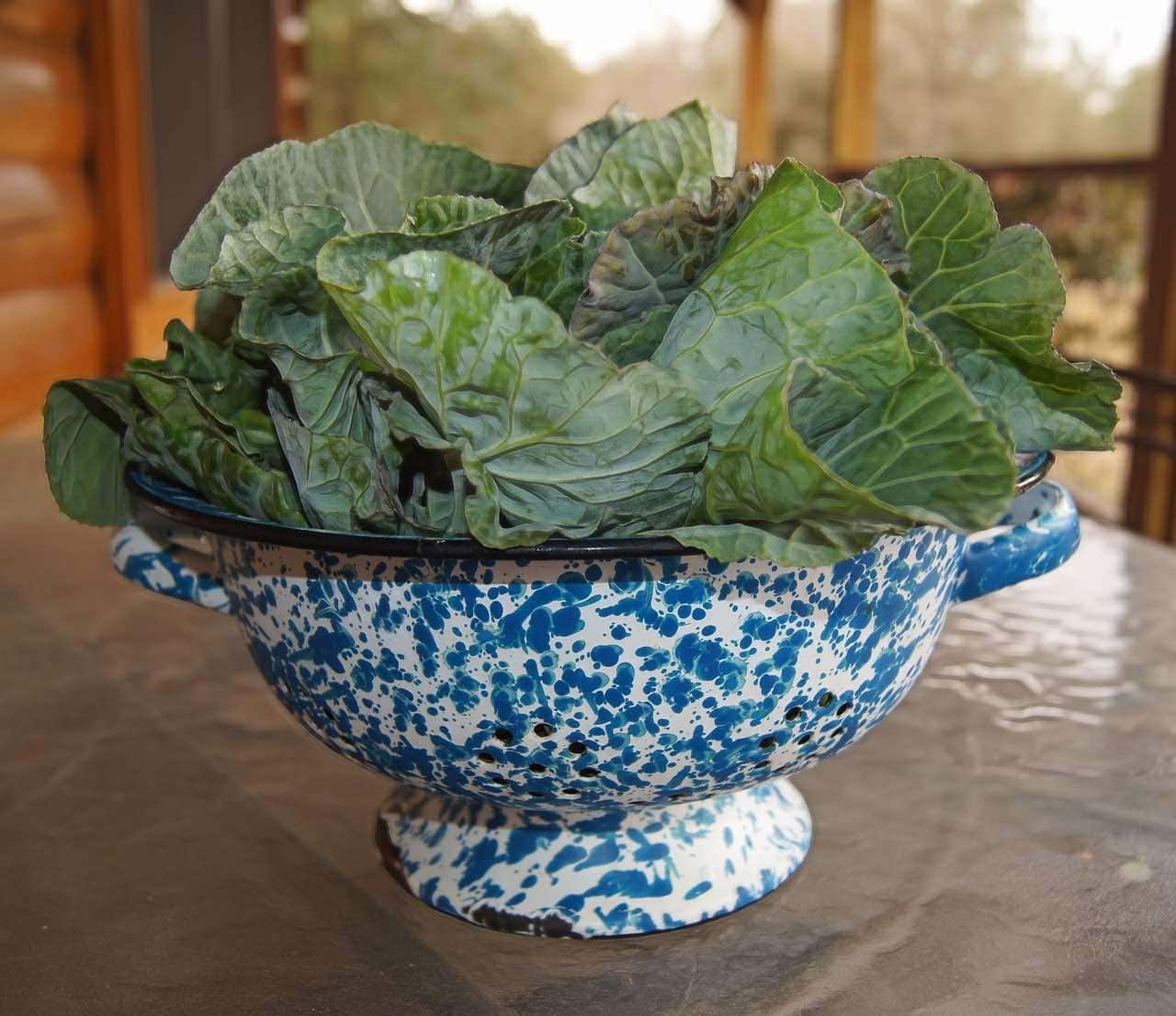
There are multiple greens that are healthy for your bearded dragon, including collard greens, turnip greens, mustard greens, and beet greens. Many people make their adult beardies a salad every day with these greens as the base.
2. Broccoli
Broccoli is a great vegetable for bearded dragons. Though some beardies prefer it raw, others have a palate that favors this vegetable lightly steamed. You’ll likely have to experiment to see what works for your pet.
3. Herbs
Herbs are a tasty addition to your bearded dragon’s daily diet, and there is a variety of herbs that are safe and healthy. Parsley, cilantro, and savory are all regularly fed to beardies. In the US, parsley and cilantro are easy to find in grocery stores and are quite inexpensive.
4. Watercress
Although not overly popular in the US, watercress can often be found in Asian markets, as well as some grocery stores and farmer’s markets. You may even consider growing your own watercress if you have the space in your yard.
5. Clover
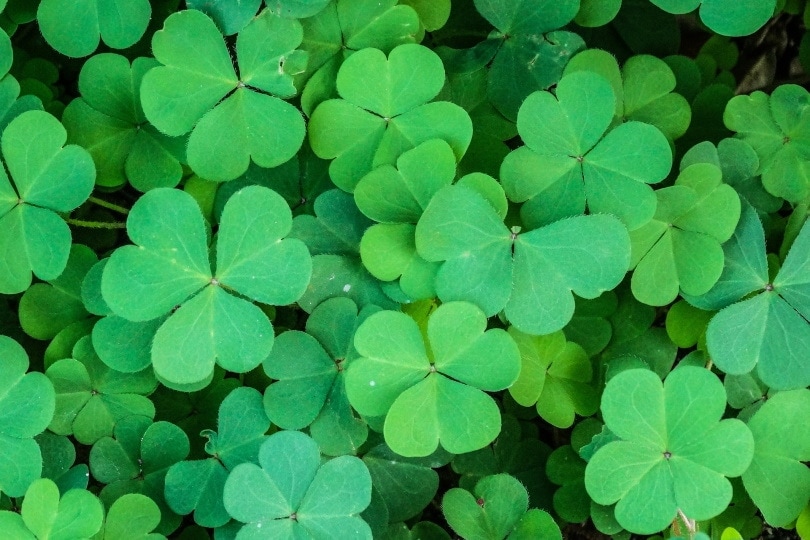
Clover is tasty and healthy for your bearded dragon, although it should be limited to only being fed a couple of times weekly. You can feed your beardie clover from your own yard, as long as you know it is free of dangerous chemicals, like pesticides, and you have washed it thoroughly, Also, ensure there are no other grasses or plants mixed in.
6. Dandelion
Just like with clovers, dandelions can be fed to your bearded dragon directly from your yard, but make sure they are safe and clean. Dandelion greens are good for your bearded dragon, while the flowers can be fed as a treat. Avoid feeding them stems or the flower puffs, though.
7. Green Beans
Inexpensive and accessible, green beans are a good option for your bearded dragon. If you live somewhere with minimal access to fresh vegetables, canned green beans without added salt that have been rinsed can work, as well as thawed frozen green beans.
8. Bell Peppers
Although bell peppers are tasty and healthy, they should be limited to only a few times per week for your beardie. They should be chopped into bite-sized pieces to prevent choking. Bell peppers of any color are appropriate. Avoid hot peppers and other types of peppers, though.
9. Bok Choy
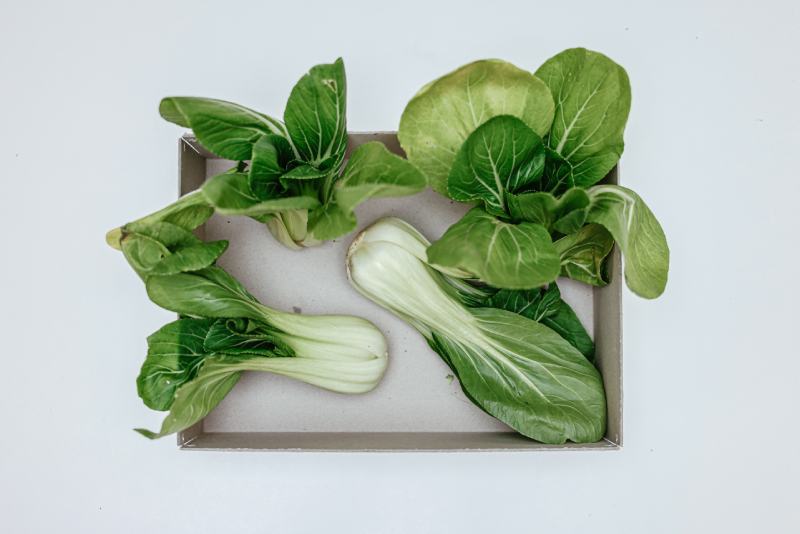
Bok choy isn’t always easy to find, but it makes good food for bearded dragons. Bok choy and baby bok choy are both appropriate options for beardies, but the harder parts of the stems should be removed.
10. Alfalfa Sprouts
Sprouts are lauded as a nutrient-dense addition to salads and sandwiches for people, and your beardie is no different. Alfalfa sprouts are one of the easiest types of sprouts to find, and they are packed with nutrients to keep your friend healthy.
11. Kale
Kale is packed with nutrients to keep your bearded dragon healthy. It has a high calcium-to-phosphorus ratio, but it is also high in oxalates, so it should be fed sparingly every week.
12. Cabbage
Both green, red, and napa cabbages are suitable for bearded dragons. They’re low in oxalates and have a high calcium-to-phosphorus ratio. Cabbage tends to be easy to find and inexpensive.
13. Escarole

You may not find escarole in your local grocery store every day, but if you do find it, your bearded dragon will likely enjoy the change of pace. Make sure to wash this leafy vegetable well before feeding it to your bearded dragon.
14. Kohlrabi
Like escarole, kohlrabi may be difficult to come across in grocery stores, but it can often be found in farmer’s markets. This vegetable is part of the cabbage family, so it’s high in fiber and protein but low in calories.
15. Romaine Lettuce
One of the easiest greens to find in grocery stores and markets alike is romaine lettuce. This tasty lettuce is inexpensive and healthy for your beardie. It contains essentially no oxalates and has a suitable calcium-to-phosphorus ratio for regular feeding.
16. Squashes
Both summer and winter squashes can be offered to bearded dragons. Zucchini, yellow squash, acorn squash, and butternut squash are the most common options. Winter squashes likely need to be cooked prior to serving due to their hardness. Feed squashes in moderation.
17. Peas
Peas are great for bearded dragons; however, be careful not to feed them canned variants, as these might have preservatives in them. Frozen or fresh peas are preferred. Bearded dragons can eat green peas or snow peas without issue.
18. Parsnips
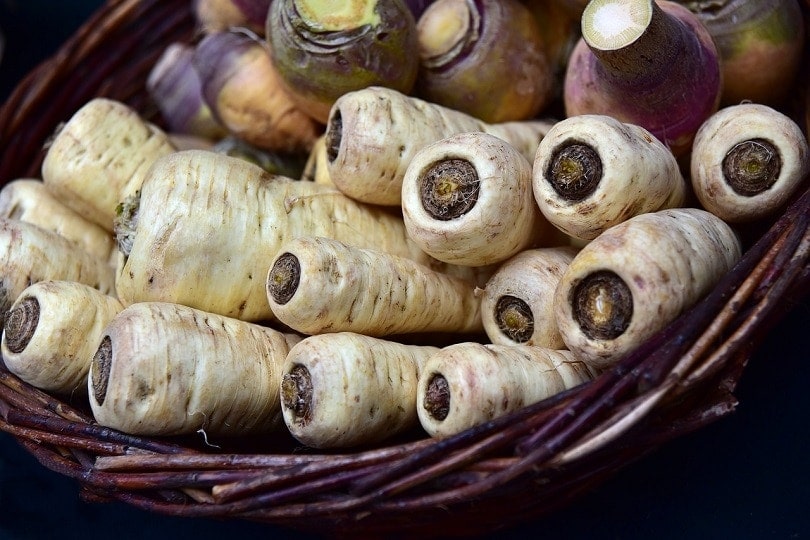
These root veggies are cousins of both carrots and parsley. They can be a nice addition to your bearded dragon’s diet but should be offered sparingly.
19. Carrots
Carrots are an ideal occasional treat for your bearded dragon because they are easy to find and inexpensive. They also come in a variety of colors, each providing different nutrients. Wash well to remove any dirt and cut it into small pieces to prevent choking. If your beardie struggles to eat hard carrots, steamed or boiled plain carrots can be offered.
20. Asparagus
Asparagus is typically easy to find in most grocery stores, but it may be a little bit expensive to purchase just for your bearded dragon. Remove hard stems before feeding, and your bearded dragon may have the easiest time eating steamed or boiled asparagus. Cut it into bite-sized pieces before feeding.
21. Brussel Sprouts
These are a great alternative to broccoli, but most bearded dragons prefer this vegetable slightly softened, which you can do by gently steaming them.
22. Sweet Potato
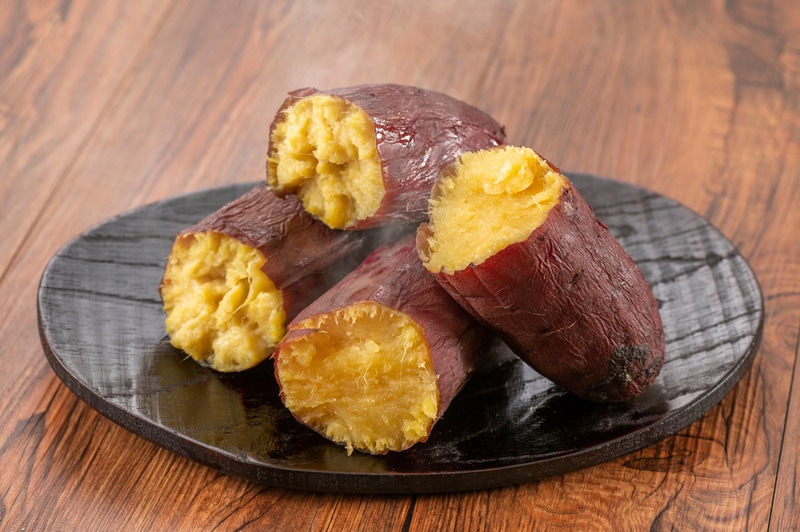
Sweet potatoes can be offered as an occasional treat for your bearded dragon. Don’t feed raw sweet potatoes, though. They can be steamed or boiled without salt and seasonings before being fed to your beardie.
- Related Read: Can Bearded Dragons Eat Potatoes?
23. Okra
This summer veggie is tasty but likely difficult to come across outside of the late summer season. It makes a great treat for your bearded dragon, but remember to remove any hard parts, as well as the stem.
24. Cucumber
Cucumbers are a great snack for your beardie, as they’re high in moisture and relatively low in calories when compared to some other options (such as sweet potatoes).
25. Beetroot

This is another popular vegetable that beardies love. A word of caution, though: this may change the appearance of their feces but shouldn’t be a cause for alarm. However, red poop with a non-beetroot diet definitely warrants prompt veterinary attention.
26. Rutabaga
For a change of pace and some dietary variety, you could try offering some bearded dragon some steamed rutabagas. Though some dragons don’t appreciate the taste, others find it quite enjoyable!
27. Pumpkin
Though sometimes difficult to find, these are perfect for feeding bearded dragons around Halloween. However, their seasonality might make them challenging to find in some places. In addition, they should be cooked to soften up before offering them to your beardie.
Conclusion
When it comes to feeding your bearded dragon, there are a lot of fresh vegetables that can be safely offered. Make sure to stick to recommendations on how much and how frequently to offer them, though. For questions about your beardie’s diet, it’s best to consult with your veterinarian.
See Also:
- Can Bearded Dragons Eat Tomatoes? Vet-Approved Facts & FAQ
- Can Bearded Dragons Eat Cilantro? Vet-Reviewed Nutrition Facts & FAQ
Featured Image Credit: Serhii Shcherbyna, Shutterstock


